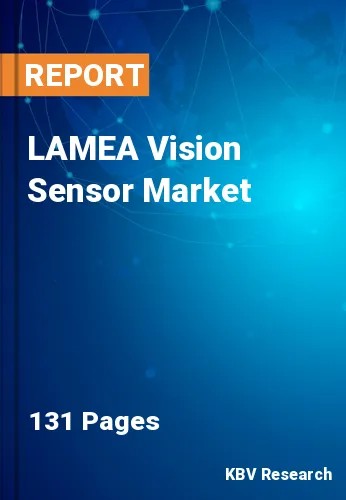The Latin America, Middle East and Africa Vision Sensor Market would witness market growth of 14.1% CAGR during the forecast period (2023-2030).
Continuous innovation has led to the development of vision sensors with enhanced capabilities. Higher resolutions, faster processing speeds, and improved sensitivity to various environmental conditions have made these sensors more reliable and versatile. These advancements make vision sensors suitable for various applications, driving their adoption in diverse industries. The advent of Industry 4.0, characterized by integrating digital technologies into manufacturing processes, has been a significant driver for adopting vision sensors. In smart factories, vision sensors contribute to automated quality control, process optimization, and real-time monitoring, aligning with the goals of increased efficiency and reduced downtime.
Vision sensors are a critical component in developing and deploying autonomous systems. Vision sensors enable real-time object detection, navigation, and decision-making in the automotive, drone, and robotics industries. The pursuit of autonomous vehicles has fueled the adoption of vision sensors for applications like advanced driver-assistance systems (ADAS). Vision sensors generate vast amounts of visual data, and the integration of advanced analytics has become instrumental in extracting meaningful insights. Businesses across various sectors leverage this data for process optimization, predictive maintenance, and data-driven decision-making. The adoption of vision sensors is closely tied to the value derived from the analysis of visual information.
According to the International Trade Administration, in 2020, Saudi Arabia accounted for nearly 52% of all vehicles sold in the Gulf Cooperation Council (GCC) and 35% in the MENA region. In Saudi Arabia, 556,000 vehicles were sold in 2019 and 436,000 in 2020. Sales are anticipated to reach 543,000 units by 2025, with only 32,000 units being electric vehicles. Thus, due to these aspects, the vision sensor market will expand across the LAMEA region in upcoming years.
The Brazil market dominated the LAMEA Vision Sensor Market by Country in 2022, and would continue to be a dominant market till 2030; thereby, achieving a market value of $174.6 million by 2030. The Argentina market is showcasing a CAGR of 14.7% during (2023 - 2030). Additionally, The UAE market would register a CAGR of 13.7% during (2023 - 2030).
Free Valuable Insights: The Worldwide Vision Sensor Market is Projected to reach USD 8.2 Billion by 2030, at a CAGR of 11.3%
Based on Sensor Type, the market is segmented into Less Than 3D, 3D, and Others. Based on End User, the market is segmented into Automotive, Consumer Electronics, Electronics & Semiconductor, Pharmaceuticals, Food & Packaging and Others. Based on Application, the market is segmented into Inspection, Code Reading, Gauging, and Others. Based on countries, the market is segmented into Brazil, Argentina, UAE, Saudi Arabia, South Africa, Nigeria, and Rest of LAMEA.
By Sensor Type
By End User
By Application
By Country
Our team of dedicated experts can provide you with attractive expansion opportunities for your business.

